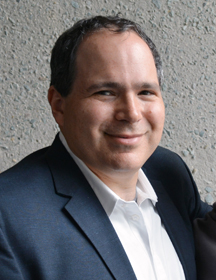Putting Marketing Tools to Work in Science
By Cindy Brauer
Savvy scientists use the business tools of marketing, sales and branding to land a good job, win funding and shape the public debate, said Marc Kuchner in a recent interactive workshop, “Marketing for Scientists,” on California campus of The Scripps Research Institute’s (TSRI).
An astrophysicist with the National Aeronautics and Space Administration (NASA) as well as an alumnus of Harvard (AB, physics) and CalTech (PhD, astronomy), Kuchner wrote the book Marketing for Scientists: How to Shine in Tough Times (Island Press, 2011). He also hosts a blog on how scientists can use business tools “without losing their credibility.”
Kuchner defines marketing as the “craft of understanding and meeting other people’s needs and desires.” The markets for scientists include funding institutions or agencies, philanthropists, job interviewers, government officials, news reporters and the public. Reaching these markets requires two-way conversations with the ultimate goal of establishing relationships, said Kuchner.
A scientist’s message is usually three-fold: how his/her research is important, what is needed to realize its potential and why the outcome is valuable. Kuchner offered several tips to help scientists refine their message and conduct their market conversations with enthusiasm and conviction.
Defining a ‘Signature Research Idea’
First, he said, “Define your signature research idea—what you want to be famous or known for—a hypothesis, technique, discovery, research team, data set, code, product, etc.” Researchers can have several signature research ideas over the course of their careers.
He suggested researchers carry a pocket-sized prop to help people visualize these signature research ideas. “Science is all about words—describing, hypothesizing,” explained Kuchner. “But the world communicates with five senses. A prop keys into a person’s sense of touch, and maybe other senses as well, that scientists usually ignore when they communicate.”
For example, Kuchner told of a physicist at the Large Hadron Collider who carries around a lightbulb—representing a particle accelerator—to start a conversation. A corkscrew as a metaphor for DNA and 3-D printed models of viral structures are other possible props. Experiment with using different kinds of props to start conversations, Kuchner advised.
Creating a Brand
“Branding” a signature research idea involves creating an indelible impression and reputation among the researcher’s markets. “A brand is the gut feeling people have about a product, company or idea, the impression that springs to mind when you hear the name,” Kuchner explained, citing the Apple brand, immediately understood as representing high-tech innovation, good design and intuitive use.
A good brand name is a memorable and intriguing conversation starter, said Kuchner. Effective brand names are easy to remember and pronounce, unique, legitimate-sounding and evocative. Notable scientific brand names and buzzwords include “sonic hedgehog,” “black hole,” “dark energy,” “quark,” “the god particle,” “big bang theory” and “quantum mechanics.”
The “rule of three” is another marketing tool to quickly convey a signature research idea in conversation: “Come up with a short, snappy list of three benefits your signature research idea offers,” Kuchner said. “Make the first two sound similar and add an extra syllable or two to the third. For example, ‘The new medicine works faster, costs less and has no side effects.’ ”
Starting the Conversation
Kuchner provided a four-step “sales script” to help scientists begin a conversation about their work with key individuals, while incorporating knowledge of the person and the situation:
- “Well, you know about … (a well-known research idea relevant to the researcher’s work) right?”
- “Imagine if … (use your “rule of three” list)”
- “Well, I’m working on … (the brand name of your signature research idea)”
- Ask an open-ended question to spark your “customer’s” attention and further interest
Conversations that engage listeners, particularly from non-science fields, help realize the goal of building a long-lasting and mutually beneficial “tribe” of people bonding over the contributions science can make to build a better world, Kuchner explained.
“In today’s world, marketing can be a positive, even healing, force that will help you get more science done,” he said.
The workshop was sponsored by TSRI’s Career and Postdoctoral Services office. For more insights and science marketing tips, visit Kuchner’s blog site.
Send comments to: press[at]scripps.edu














